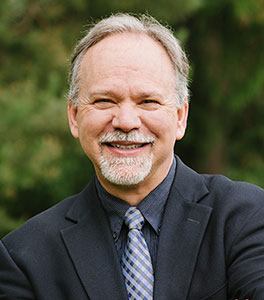 by Dr. Paul W. Chilcote
by Dr. Paul W. Chilcote
Teresa of Avila: Called to Abiding Prayer. At the same time that Martin Luther was sending shock waves through the life of the church in central Europe, Teresa of Avila was breathing new life into her beloved Carmelite Order in Spain, and ushering in a new era of spirituality and prayer. In her Life, Teresa described prayer in a way that any common person could understand. She used various images related to water. She used the image of fetching water from a well and watering a garden bucket by bucket to describe what she called discursive meditation or intellectual prayer.
This somewhat slow and plodding discipline provided a foundation for higher levels of prayer. Recollection or affective prayer she likened to a water wheel, rolling the same thoughts and intimate connections with God around in one’s mind. Quiet provides living springs of water that can even lead to union with God, which she describes as a drenching rain. The seven rooms of her Interior Castle have become a common place way of describing our relationship with God as a journey into the heart and center of a home. Teresa’s life was characterized by a deep trust in persons and the universe, an enduring hope in history, exuberance concerning God’s grace and love, an openness to the new, and a sacrificial style of life, all shaped by abiding prayer.
Phoebe Palmer: Called to Entire Consecration. Perhaps no woman has influenced religion in America in the modern era more than Phoebe Palmer. During a lifetime that spanned much of the 19th century, she spoke to over 100,000 people about Jesus and sparked the flames of revival on two continents that brought nearly a million people into the church. One of the founders of the so-called holiness movement with roots in the Wesleyan tradition, she drew energy and inspiration from her personal quest for holiness of heart and life. Phoebe was, on many levels, the mother of the holiness movement and the grandmother of the Pentecostal movement in North America. She was convinced that righteousness, justice, and true peace was God’s grand vision for all people and poured herself into kingdom work to these ends. The heart-felt Methodism in which she was raised insisted on the importance of both conversion and sanctification, and her life revolved on many levels around a vision she received at the age of thirteen – Jesus came to her, held her in his arms, and bid her “be of good cheer.” While a revivalist second to none, Phoebe’s conception of the holy life spilled over into active social service. In 1850, she and other women founded the Five Points Mission in one of the most notorious slum areas of New York City. She refused to segregate the physical needs of God’s children from their spiritual yearning. Her covenant of entire consecration includes these poignant words:
In the name of the Father, Son, and Holy Ghost, I do hereby consecrate body, soul, and spirit, time, talents, influence, family, and estate—all with which I stand connected, near or remote, to be for ever, and in the most unlimited sense, THE LORD’S. . . . Thou dost now behold my entire being presented to Thee a living sacrifice. Already is the offering laid upon Thine altar. Yes, my all is upon Thine altar. By the hallowing fires of burning love, let it be consumed!
My three blog series, included five women. Five women called by God. How can we possibly calculate the difference just these five women have made in this world? Through their humble obedience, costly discipleship, visionary leadership, abiding prayer, and entire consecration, they have made the love of God real in this world. Thanks be to God for their lives and their witness, and that of countless other women in the history of the church.
Paul W. Chilcote, PhD is Academic Dean; Professor of Historical Theology and Wesleyan Studies at Ashland Theological Seminary. You can contact him at pchilcote@ashland.edu
